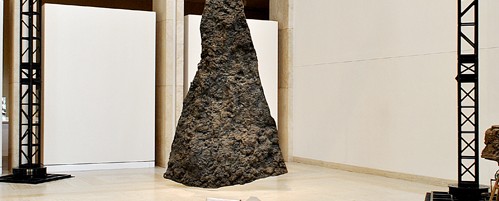Vending machines with healthier alternatives are being installed at PSU
As you grow hungry on your way to class, you may begin to regret not bringing food with you. Thankfully, you spot a vending machine in the hall, which allows you to grab something quickly and be on your way.
But as you bite into your newly procured snack, you find that you are not provided with the feeling of satisfaction that one should get when hunger is no longer a problem. While the snack food commonly found in vending machines may fill you up temporarily, you are not getting the right nutrients.
If you, like many others, are tired of the usual junk that shows up in vending machines and stores, you need not be disappointed much longer. On Jan. 25, four new vending machines will be installed in the lobbies of the Portland State University residence halls. Instead of the usual chips and candy bars, these vending machines will contain healthier local food.
Usual junk food typically contains artificial coloring, additives and artificial flavors. While some additives have been ruled as safe, most of them have adverse effects. These can include behavioral disorders, hyperactivity and other mental problems. More importantly, however: these artificial flavors can also cause nutrient deficiencies and even cancer.
For example, Tartrazine, shown on any nutrition-facts label as “Yellow 5,” is a synthetic yellow dye made from coal tar and is commonly used in soap, shampoo, nail polish and crayons. Its consumption has been found to lead to cancer, as well as behavioral disorders such as ADHD. It is commonly found in Doritos, nachos, cotton candy, soft drinks, instant soups, various candies, gum and even pastries and cake mixes.
Quinoline yellow, another yellow food dye, is made from synthetic coal tar dye and can cause not only ADHD, but also asthma and rashes.
Erythrosine, better known as “Red 3,” is a cherry-pink synthetic food dye also made from coal tar and used to kill maggots and flies. It can cause light sensitivity, cancer and learning difficulties.
Allura red, otherwise known as “Red 40,” is more commonly used in the United States. Often found in tattoo ink and cosmetics, this food dye is also associated with behavioral disorders in children and is banned in Denmark, Belgium, France and Switzerland.
Obviously, artificial colors, as well as other additives, have no place in a healthy diet. The fact that these things are in so many foods which are made so widely available is, frankly, disturbing.
Luckily, junk food does not seem to be the typical diet for very many students at PSU. Some students have said that although a bag of chips or other junk food might look good, they know it is not very good for them. Others said that they try to find the healthiest food that they can find—not always an easy endeavor.
Students told about the new vending machines reacted with enthusiasm, saying that healthy snacks would be great. They were pleased to hear that local and healthy foods would be available. Even students who claim they do not typically get food out of vending machines say that they would be likely to buy the healthy alternatives these new vending machines will offer.
The students’ main concern regarding the new vending machines is the cost of the healthier food. Though the price of the food in the new vending machines remains to be determined, the assumption is that it may cost more simply because healthier food tends to be more expensive.
However, what students lose now monetarily when choosing healthy food, they make up for later. Eating cheap but unhealthy food can lead to more money spent on medical bills later when dealing with the consequences of their unhealthy diets. And those consequences may be closer than one would think.
Young people can develop health problems as easily as anyone, so save yourself the shock of being told that you have a health problem by preemptively eating healthy food.
When we eat chips and candy bars, what we are shoveling into our mouths is otherwise used for killing bugs or put into soap, cosmetics and nail polish.
Instead of eating cancer-causing products that barely fill us up, we should make sure that we get the proper nutrients that will help us in the long term. This will be even easier once the new vending machines are installed.
The presence of the new and healthy vending machine food may make the usual junk food pale in comparison and encourage everyone to get something healthy, even if they are only looking for a quick snack. If the new healthy vending machine food is successful enough in encouraging students to substitute their usual snacks, the new vending machines may turn up in other buildings on campus besides the residence halls.
Everyone should consider going to the new vending machines for snacks, whether they live in the residence halls or not. Instead of buying a bag of chips at the store or grabbing a candy bar from a machine just because it is cheap and quick, pay attention to the value of what you consume.





Hello there, I discovered your website by means of Google whilst searching for a similar topic, your website got here up, it seems to be good. I have bookmarked to favourites|added to my bookmarks.